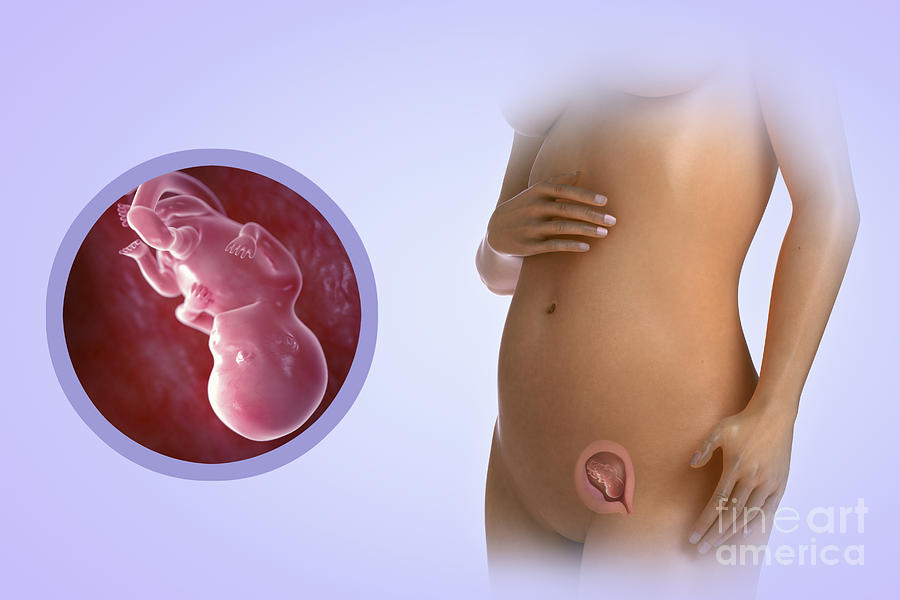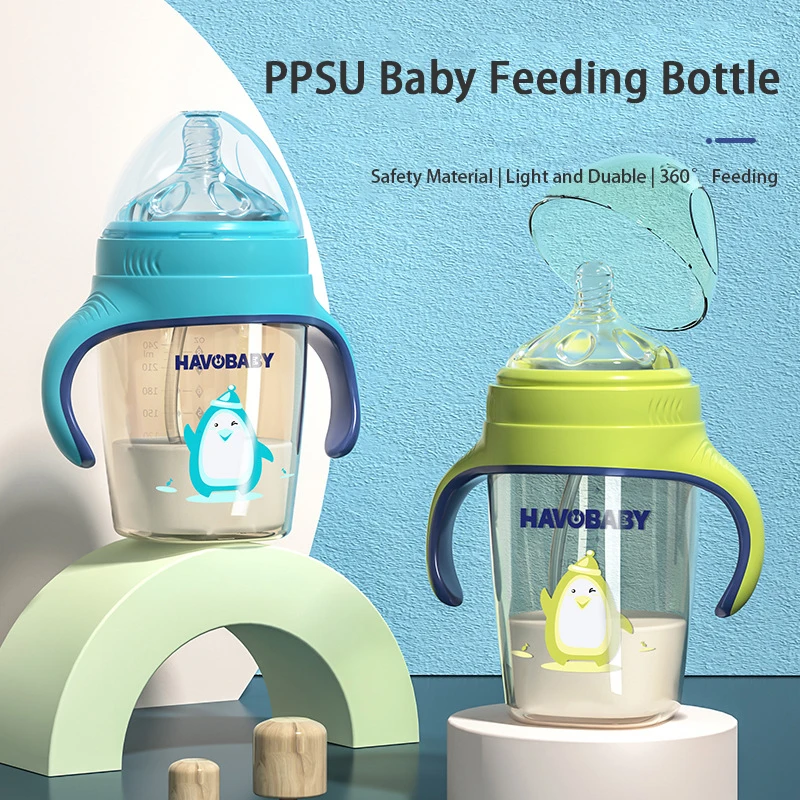Other ways to have a baby
15 ways to make a baby (And why you’re ready to do so)
Till as recently as a couple of years ago, mothers-in-law asked uncomfortable questions, intrusive relatives cast aspersions and couples hung their heads in shame for not having kids in the first few years of marriage. Not any more.
Easy availability of information online has played a big role in changing old mindsets, especially in urban India. Most young people are coming around to exploring newer, more successful ways to procreate.
Even as most experts stand by the view that the best and the most fun way to make a baby is inside a bedroom, people are more aware of “other ways” to procreate. “Having a baby has always been a wonderful thing. And, thank God, people are now not just discovering but also making use of and talking about the ‘other ways’ rather comfortably,” says Mumbai-based infertility specialist, Dr Aniruddha Malpani.
Actor Aamir Khan and Kiran Rao’s baby boy was born via surrogacyIncreasing numbers
Experts assert that there is a definite growth in the number of people coming in for different treatments. “We may not have exact figures but the increase in the number of fertility clinics in urban India speaks volumes of the changing trends,” says Dr Malpani.
From just about five fertility clinics a few years ago, Mumbai now has nearly 1,500. Smaller towns boast of a similarly proportional increase. “In the last four years, I have seen a steady rise of nearly 30 per cent every year as far as patients are concerned,” he adds.
In the know of things
IVF (In vitro fertilisation) specialist Dr Anup Gupta credits technology, awareness and availability of information for changing mindsets. Exposure and exchange of information through more than one medium – social networking sites, online communities, blogging, etc – bring in a higher degree of comfort in talking and understanding personal problems while maintaining anonymity. “With information at your fingertips, couples in urban India are now taking conscious decisions and finding solutions to their personal problems without any pressure,” says Gupta.
Delhi-based architect Anshul Vohra agrees. He learnt about the different ways of having a baby through research on the Net and signing up with an online community on surrogacy and sperm donation. “It was only after the initial research was done and my wife and I felt in control that we went to a specialist. My wife and I decided to have a baby through sperm donation. So only the treatment was left to the specialist. And thankfully we didn’t need to involve anyone we didn’t want to,” says Vohra.
Woman Power
For Vohra, his wife’s opinion was equally paramount. And that, say experts, is another prime reason for this great attitude shift. “Unlike in the past, when women rarely had a say in matters of reproduction, more women are now taking it upon themselves to speak up on issues that have plagued them for eternity,” says Gayatri Dua, a sociologist at Delhi University. “It is one of those things that are very personal to women in general. Earlier, everyone had a say in her life. Now, she is making sure that it is only her. So she decides when to marry, when to have a child and how exactly. The only other person involved is perhaps the husband or partner,” says Dua.
Now, she is making sure that it is only her. So she decides when to marry, when to have a child and how exactly. The only other person involved is perhaps the husband or partner,” says Dua.
And with women increasingly choosing to marry late, there is a definite growth in reasons that fuel sperm or egg donation and surrogacy. “It is a medically proven fact that the best child-bearing ages for both men and women are in their late 20s and early 30s. With age, the ovulation process starts to slow down. For many couples who get married in their later years, the other ways to make a baby are the best options in case they fail to conceive naturally,” says Dr Malpani.
Director-producer Farah Khan delivered triplets who were conceived through IVFLooking up to the stars
Like with most celebrity endorsements, this trend too owes some of its popularity to filmstars. Thanks to actor Aamir Khan and wife Kiran Rao celebrating the birth of their son Azaad who was born via surrogacy or director Farah Khan happily trotting around with her IVF-acquired triplets at the age of 40, things are indeed changing.
“It makes a big difference when people you look up to endorse something. It gives you a lot of confidence,” says Meenakshi Raina, a university lecturer. Raina was 38 when she decided to go in for IVF treatments motivated by Khan who had children at 40. “My husband and I figured late that we wanted to have babies,” Raina explains. “I was already 38 and failed attempts at natural conception made me realise that my biological clock had ticked away. After a point, I gave up trying. Then I read about filmmaker Farah Khan being pregnant with triplets. She was 40. I waited with bated breath till she delivered. And then it just clicked. If she could, why couldn’t I?”
Raina decided to go through the IVF cycle and conceived twins on her third attempt. Today they are four years old – happy and healthy. The couple is overjoyed. “Whoever says you can’t have babies late,” she chuckles!
Emotion Overload
But it isn’t always as easy or comfortable for every couple. There are too many emotional strings attached, says Mumbai-based psychologist Dr Swapnil Mukherjee. “The very fact that a couple can’t conceive naturally is very stressful. Add to it situations such as taking a donor’s sperm or egg or both or depending entirely on a stranger to carry your baby through the nine months (in the case of surrogacy) – it can be an absolute nightmare,” says Mukherjee.
“The very fact that a couple can’t conceive naturally is very stressful. Add to it situations such as taking a donor’s sperm or egg or both or depending entirely on a stranger to carry your baby through the nine months (in the case of surrogacy) – it can be an absolute nightmare,” says Mukherjee.
Experts believe in the necessity of counselling for the couple and the family in such situations. “It is only after long counselling sessions and a thorough study of the mental make-up of all concerned that we advise further medical course of action,” says Dr Malpani. Many couples do have apprehensions, especially in case of the involvement of a sperm or egg donor, say psychologists. “We have many cases when in spite of the keenness of one partner, the other is unable to accept the fact that he or she will not be the biological parent. This generates a lot of insecurity in the partner who is keen on the procedure,” adds Malpani.
The emotional turmoil often unnerves many couples. But then, with adoption laws becoming stringent, for most couples in a “stable relationship”, these are good options.
Diary of a surrogate mother
It’s never easy to give up the child you have carried for nine months and given birth to. But I do this for a living – for myself and my two sons. My own two sons. I fell in love with a boy from my village and ran away from my home in Punjab. My family disowned me. But I didn’t care. My husband took up a job as an auto driver in Delhi, we had twin boys and we were happy till a bus accident left my husband paralysed from the waist down.
I tried working as a domestic help for some time but the money wasn’t enough. Then my neighbour introduced me to a lady doctor in a big clinic. The doctor told me that I could get decent money if I could make babies for couples who didn’t have them. I was apprehensive, but she called my husband too and explained that I wouldn’t have to do much. Just take care of the baby as long as it’s in my womb. And they (the doctor, clinic and couple) would look after all my needs during the pregnancy. Only, I would not have any rights over the child. If the ‘parents’ don’t agree, I won’t even get a look at him/her.
If the ‘parents’ don’t agree, I won’t even get a look at him/her.
I agreed. I had my husband and children to look after. And we needed the money. Things went as promised. All medical bills, all expenses, even my saris and sometimes, gifts for my children came from the couple. Then she was born.
After 12 traumatic hours of labour, she came out. The doctor asked if I wanted to see her. I refused. “What’s the point of seeing her if I’ll never be able to see her again?” I asked. It was my toughest moment.
I had two more children after that. I’ve made a decent sum but don’t know how long can I carry on. I haven’t seen any of the children; I just call for my own sons after every delivery. After all it’s for them that I am doing this.
-Pratibha Mishra (name changed)
Vicky (Ayushmann Khurrana) plays a sperm donor in the film Vicky Donor
)
Who is a donor?
Sperm donors need to be graduates; between 20-40 years. They are tested for sound health and sperm count.
They are tested for sound health and sperm count.
Egg donors need to be between 20-40 years. They are tested for sound health and the ovarian reserve count.
Legal diary
For surrogacy, it’s essential that a contract be signed, so that the intended parent is assured that the surrogate will hand over the baby to them after his/her birth
Approximate costs incurred?
IUI or intrauterine insemination is less expensive; but has a lower success rate. It costs about Rs 20,000 per cycle.
IVF or In vitro fertilisation costs about Rs 1,00,000 per cycle. Medications are extra. This is a per-treatment-cycle cost , not a per baby cost
Ways to make a baby
1. Artificial insemination of mother with father’s sperm
2. Artificial insemination of mother with donor sperm
3. Artificial insemination with egg and sperm donors, using a surrogate mother
4. In Vitro Fertilisation (IVF) using egg and sperm of parents
5. IVF with Intra-Cytoplasmic Sperm Injection
IVF with Intra-Cytoplasmic Sperm Injection
6. IVF with frozen embryos
7. IVF with egg donor
8. IVF with sperm donor
9. IVF with egg and sperm donor
10. IVF with surrogate using parents’ egg and sperm
11. IVF with surrogate and egg donor
12. IVF with surrogate and sperm donor
13. IVF with surrogate using her egg, sperm from baby’s father
14. IVF with surrogate using egg and sperm donors
15. Naturally. Make love!
Information courtesy:
www.drmalpani.com/makeababy.htm
Vicky made a difference!
From showcasing a society that cringed at words like infertile or even adoption for the longest time, the movie Vicky Donor became a trendsetter, talking about issues that were strictly bedroom topics – impotence, infertility and sperm donation.
“It was a big risk to talk about sperm donation and base a film on that. But attitudes are changing. People are far more aware and open now. The fact that the film was so well appreciated speaks volumes of the change in society,” says Shoojit Sircar, director of Vicky Donor. Ayushmann Khurrana, who played Vicky in the film, says, “It made sure that everybody understands that not being able to have a child isn’t a crime and neither is using ‘other ways’ to have one.”
The fact that the film was so well appreciated speaks volumes of the change in society,” says Shoojit Sircar, director of Vicky Donor. Ayushmann Khurrana, who played Vicky in the film, says, “It made sure that everybody understands that not being able to have a child isn’t a crime and neither is using ‘other ways’ to have one.”
From HT Brunch, July 15
Follow us on twitter.com/HTBrunch
Connect with us on facebook.com/hindustantimesbrunch
SHARE THIS ARTICLE ON
|
ROPA technique MOTHERHOOD IN LESBIAN, BISEXUAL AND TRANSEXUAL COUPLES
Thanks to advanced technology and individually tailored treatments, modern seminal models can achieve pregnancy. For example, the ROPA method allows same-sex female couples to actively participate in the fertilization process. One of them is the genetic mother of the child, and the other is the biological
For example, the ROPA method allows same-sex female couples to actively participate in the fertilization process. One of them is the genetic mother of the child, and the other is the biological
- Subscribe to newsletter
- I accept the terms of the user agreement and privacy policy
This field is used for verification purposes and should be left unchanged.
What is ROPA technology?
In vitro fertilization method ROPA (Use of partner eggs) or use of female partner's oocytes is one of the assisted reproduction techniques that allows married women of the same sex marriage to participate in fertilization and pregnancy.
One provides oocytes, which are inseminated with sperm from anonymous donor , while the other receives embryos and carries a child. As a result, after giving prior consent, there is a genetic mother and one who bears a child.
Lesbian motherhood: biological and social changes
Conception requires interaction within the female reproductive organs of two germ cells: one female and one male. If, due to gender identity or sexual orientation, this path is unacceptable for a woman, it is necessary to resort to artificial reproduction methods, because sexual orientation and the desire to have offspring should not necessarily be associated with these biological characteristics.
Today we meet with different types of families whose situations and desires require individual approach in each case, such as pregnancy between two women.
Instituto Bernabeu always takes into account the special needs of each patient and adapts the medical services and fertility treatment to provide a personalized in vitro fertilization procedure.
Legal aspects of maternity for lesbian couples in Spain
Under current Spanish law: “A woman may use the methods regulated by this Law, regardless of her marital status and sexual orientation.” Therefore, the law enshrines the right to motherhood for all women, and more importantly, not only because of infertility.
Since 2007, Spanish law has allowed the registration of dual motherhood at the registry office. At the same time, children born using the ROPA method in a female same-sex couple are legally owned by both mothers only if their relationship is officially married.
If the women are unmarried, then the genetic mother (who did not bear a child) will have to start the process of adoption or adoption in order to be legally registered as a mother in the Civil Registry.
In the case of embryo freezing with the ROPA method (Use of Partner Oocytes), if there is no medical indication for transfer only to the partner who has already received the embryo/s for the first time, the frozen embryos can be transferred to either of them in the subsequent cycle so how women are married and embryos are shared.
IVF ROPA or dual motherhood (use of female partner's eggs)
), we offer a new alternative to co-motherhood - the ROPA method with partner egg retrieval.
Currently, although this technique is not mandated by law, one can resort to the ROPA (Reception of Oocytes from PArtner) method, or the use of female partner oocytes, which allows two women of the same sex marriage to participate in insemination and pregnancy. One provides oocytes, which are inseminated with sperm from an anonymous donor, and the other receives embryos to conceive. As a result, after the provision of prior consent, there is a genetic mother and one who bears a child. For this purpose, since 2007, Spanish law has allowed the registration of dual motherhood in the Civil Registry in the case of same-sex marriages. In this regard, children born in Spain using the ROPA method will be the children of two mothers from a legal point of view.
How is IVF ROPA carried out?
ROPA is conventional in vitro fertilization (IVF) adapted to the reproductive needs of lesbian families. First of all, it is necessary to examine both patients in order to develop an individually tailored treatment method in accordance with their state of health. Then, the ovaries are stimulated to obtain a sufficient number of embryos and thus increase the chances of conceiving a child. At the same time, the recipient partner goes through the process of preparing the uterus for the transfer and implantation of the embryo. As soon as the maturation of oocytes (oocytes) is established, the cells are punctured and aspirated. After that, the egg is fertilized in the laboratory with the donor's sperm from our sperm bank. And then, we culture the embryos under close supervision and do the transfer on the 5th or 6th day. Thus, we manage to transfer embryos to the blastocyst stage, optimizing the chances of pregnancy. The following months of pregnancy will develop like any other pregnancy, allowing both women to enjoy this happiness.
First of all, it is necessary to examine both patients in order to develop an individually tailored treatment method in accordance with their state of health. Then, the ovaries are stimulated to obtain a sufficient number of embryos and thus increase the chances of conceiving a child. At the same time, the recipient partner goes through the process of preparing the uterus for the transfer and implantation of the embryo. As soon as the maturation of oocytes (oocytes) is established, the cells are punctured and aspirated. After that, the egg is fertilized in the laboratory with the donor's sperm from our sperm bank. And then, we culture the embryos under close supervision and do the transfer on the 5th or 6th day. Thus, we manage to transfer embryos to the blastocyst stage, optimizing the chances of pregnancy. The following months of pregnancy will develop like any other pregnancy, allowing both women to enjoy this happiness.
In addition, epigenetics has shown that environmental factors and the lifestyle of a pregnant woman marks and determines the expression of the genes of the unborn child. Therefore, it is also genetically involved in the development of the child.
Therefore, it is also genetically involved in the development of the child.
Any method of reproductive treatment (IVF, adoption of embryos or ROPA) has an emotional impact. Therefore, to help our patients walk this path, the Instituto Bernabeu offers, on request and at no extra charge, sessions with a psychologist, with which expectant mothers will be prepared for the possible emotions during each stage of the process and pregnancy.
ROPA Sperm Donors - Strict Selection
To ensure maximum confidence and assurance during ROPA procedures, the selection of the most suitable donor involves comprehensive medical, physical and psychological tests and examinations.
The selection process for the most suitable sperm donor is very rigorous. It corresponds to the responsibility we take on in connection with the trust of our patients. That is why, when donating, we perform examinations and tests beyond those required by law. Due to the rigorous nature of the tests, only a small percentage of candidates are eligible for inclusion in our sperm bank. Only 9% of candidates undergo strict psychological, genetic and medical mandatory tests.
Only 9% of candidates undergo strict psychological, genetic and medical mandatory tests.
Modern technological advances allow us to perform additional analyzes providing a high degree of assurance. In addition to the tests provided, when donating, we carry out a study of sexually transmitted diseases, a genetic analysis of the 600 or 3000 most serious diseases that can be transmitted to the child and, among other things, a PCR blood test, which can be used to re-check the serology in the moment of sampling, since the diagnosis is obtained in just a few minutes. And all this at no additional cost.
We are proud to have helped thousands of women in Cartagena give birth to babies .
Over the years, we have gradually introduced and continue to introduce new technologies, offering our patients the most advanced treatments and therapies.
ART METHODS
Related Posts
Similar Videos
We guarantee your pregnancy. Institute Bernabeu
Institute Bernabeu
Pregnancy and childbirth guarantee. ROPA
Blastocyst embryo: What it is, advantage
Double donation IVF
Optimum characteristics for the endometr
12 ways / “I want a child”
#6(25) 2010
Nona Hovsepyan, Medical Consultant, Independent Laboratory INVITRO
Only 25% of couples manage to conceive a child in the first month of unprotected sexual activity. How to become one of the lucky ones?
1. Review your diet
No weight loss programs: eating low-calorie foods negatively affects fertility hormones. Part of estrogen (female sex hormones) is synthesized not only in the ovaries, but also in adipose tissue. Less fat means less estrogen. Try to eat more vegetables, fruits, and fiber-rich foods (wholemeal bread, rice, and pasta). Folic acid, essential for both conception and pregnancy, can be found in leafy green vegetables such as kale, broccoli, or spinach. Proteins and iron, which affect the general condition of the ovaries and the mechanism of ovulation, are found in large quantities in legumes. A source of calcium that a baby will definitely need is dairy products. And in order for the body to receive omega-3 fatty acids, which provide blood flow to the uterus, it is recommended to include salmon in the diet. Vegetable fats are useful - "suppliers" of vitamin E, which, by the way, should be taken at least three months before the planned conception. It is better to refuse sweets: an increase in blood sugar provokes an excessive release of adrenaline, a hormone that “attacks” progesterone, which is useful for conception.
Less fat means less estrogen. Try to eat more vegetables, fruits, and fiber-rich foods (wholemeal bread, rice, and pasta). Folic acid, essential for both conception and pregnancy, can be found in leafy green vegetables such as kale, broccoli, or spinach. Proteins and iron, which affect the general condition of the ovaries and the mechanism of ovulation, are found in large quantities in legumes. A source of calcium that a baby will definitely need is dairy products. And in order for the body to receive omega-3 fatty acids, which provide blood flow to the uterus, it is recommended to include salmon in the diet. Vegetable fats are useful - "suppliers" of vitamin E, which, by the way, should be taken at least three months before the planned conception. It is better to refuse sweets: an increase in blood sugar provokes an excessive release of adrenaline, a hormone that “attacks” progesterone, which is useful for conception.
2. Stop smoking
Trite, but effective. In men, nicotine reduces spermatogenesis, that is, it delays the formation of spermatozoa and impairs their mobility, and in women it reduces the level of estradiol, the most active sex hormone. According to a study published by the British Medical Association, smoking even one of the couple reduces the chances of getting pregnant by 10-40%. In addition, this habit reduces sexual desire and causes a lack of orgasm. So give up cigarettes yourself and try to avoid secondhand smoke in public places.
In men, nicotine reduces spermatogenesis, that is, it delays the formation of spermatozoa and impairs their mobility, and in women it reduces the level of estradiol, the most active sex hormone. According to a study published by the British Medical Association, smoking even one of the couple reduces the chances of getting pregnant by 10-40%. In addition, this habit reduces sexual desire and causes a lack of orgasm. So give up cigarettes yourself and try to avoid secondhand smoke in public places.
3. Check first aid kit
Do not take anti-inflammatory drugs and analgesics during ovulation: they negatively affect the hormonal balance. Decongestants and antihistamines can cause vaginal dryness and thickening of cervical mucus, making it difficult for sperm to move.
Taking antibiotics provokes a violation of the bacterial flora in the vagina: you have to wait 1-2 cycles with conception. After the end of any drug therapy, it is worth leaving attempts to get pregnant for a month, since the removal of drugs from the body lasts several weeks. Important: this does not apply to vitamins, in the period of preparation for pregnancy they will be very useful!
Important: this does not apply to vitamins, in the period of preparation for pregnancy they will be very useful!
4. Track your ovulation
It is more customary, of course, to start a calendar and count the 14-16th day from the beginning of menstruation. But it is better and more reliable to use special tests: ovulation can occur on other days of the menstrual cycle, especially if it is irregular. Do not forget about the well-known method for determining ovulation - measuring basal temperature. To determine the nature of ovulation, you need to carry out this procedure for 3-5 menstrual cycles.
5. Maintain the rhythm
Abstaining from sex for more than seven days may reduce male fertility. This has been proven by scientists. At this time, the amount of sperm increases, but not its quality. However, in men who have an intense sex life, the quality of sperm also suffers - it simply does not have time to be produced. The optimal mode is sex 3-4 times a week.
6. Maintain posture
The most favorable posture depends on how the woman is “arranged”. If the uterus is in the middle position or tilted forward from the small pelvis, there are no restrictions. And with the uterus tilted back (retroversial position), spermatozoa may have difficulties. In some cases, doctors recommend lying on your stomach, in others, lifting your hips up. When sperm enters the vagina, only diseases of the cervix can interfere with sperm. The flow of part of the "extra" sperm after sexual intercourse is completely natural.
7. Call your parents...
...to learn about possible genetic and hereditary diseases in the family. Regardless of the information received, it is worth going to a consultation with a geneticist. The specialist is able to detect hidden problems that can have a negative impact on conception, pregnancy or the health of the unborn baby. Children with congenital defects can also be born to completely healthy parents due to disorders in the germ cells.
8. Manage physical activity
Any kind of aerobic activity - dancing, cycling, swimming, even walking - makes the heart and lungs work harder, and oxygen-rich blood is carried throughout the body, including the reproductive system. Doctors advise to pay attention to strengthening the back and abdominals, but physical activity should not be intense. A couple of months before the intended conception, it is better to slow down the pace. Active training causes a protective reaction of the body: it is not up to pregnancy, all efforts are directed to the development of muscles, the excessive tension of which leads to a reflex change in the contractile activity of the fallopian tubes and uterus. This may interfere with fertilization.
9. Visit doctors
It is necessary to check for the presence of various chronic infections: toxoplasmosis, chlamydia, cytomegalovirus, herpes. Before conception, you need to cure these diseases and undergo a rehabilitation course. During pregnancy, due to a physiological decrease in immunity, all “hidden” diseases can appear. Go to the dentist: gingivitis and periodontitis (inflammation of the gums) interfere with the normal functioning of sex hormones. Underweight or overweight in women: both lead to irregular cycles and disruption of ovulation. It does not hurt to check at the clinic whether all routine vaccinations have been made: it is more than undesirable to get measles or rubella during pregnancy.
During pregnancy, due to a physiological decrease in immunity, all “hidden” diseases can appear. Go to the dentist: gingivitis and periodontitis (inflammation of the gums) interfere with the normal functioning of sex hormones. Underweight or overweight in women: both lead to irregular cycles and disruption of ovulation. It does not hurt to check at the clinic whether all routine vaccinations have been made: it is more than undesirable to get measles or rubella during pregnancy.
10. Be careful with "chemistry"
Certain chemicals found in household products can cause hormonal imbalances. If the substance smells strongly, you need to wear a mask when cleaning. It is better to prefer liquid cleaners to aerosols. Do not remove stains on clothes at home: take things to dry cleaning.
11. Don't overheat your partner
The optimal temperature for sperm maturation is about 2 degrees below the general body temperature of a man. To ensure this temperature in the groin area, underwear should be made from natural materials and have a free form.
 "
"  Grifo to ensure it was accurate. It was, and here it is.
Grifo to ensure it was accurate. It was, and here it is.
 That brought us to 23.
That brought us to 23. 
 "While there are many ways one can produce a baby, one should always consider them in the context of their safety and efficacy," says Dr. Zev Rosenwaks of Cornell University. "This implies not only safeguarding against medical risks but also paying great attention to the emotional and social manifestations of the procedures involved." (For more information on assisted reproduction, see Resources.)
"While there are many ways one can produce a baby, one should always consider them in the context of their safety and efficacy," says Dr. Zev Rosenwaks of Cornell University. "This implies not only safeguarding against medical risks but also paying great attention to the emotional and social manifestations of the procedures involved." (For more information on assisted reproduction, see Resources.)











